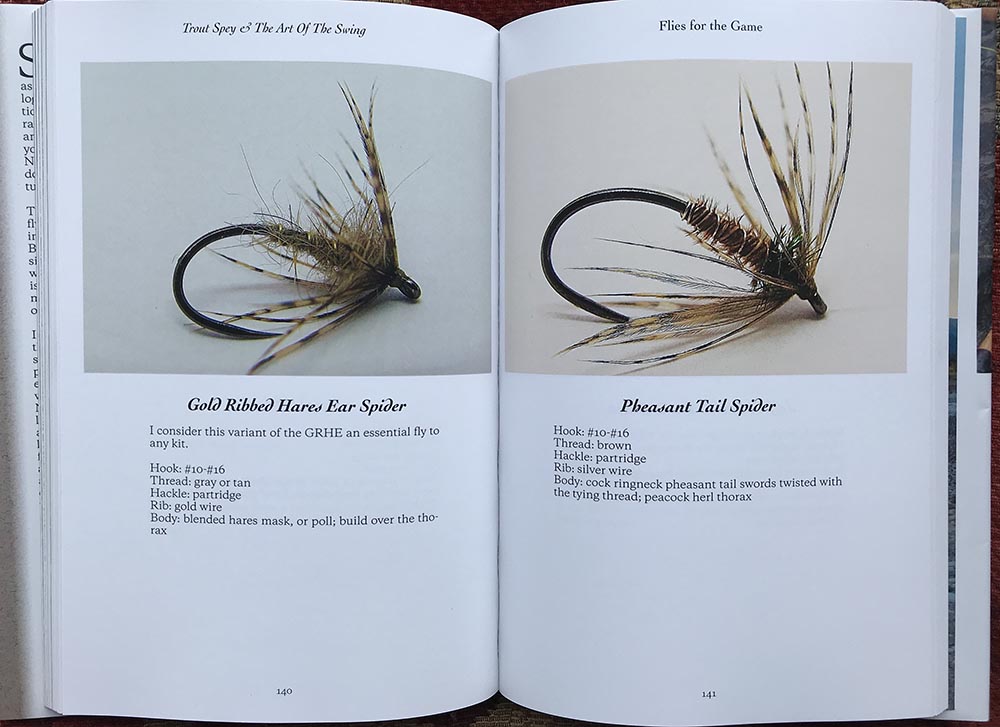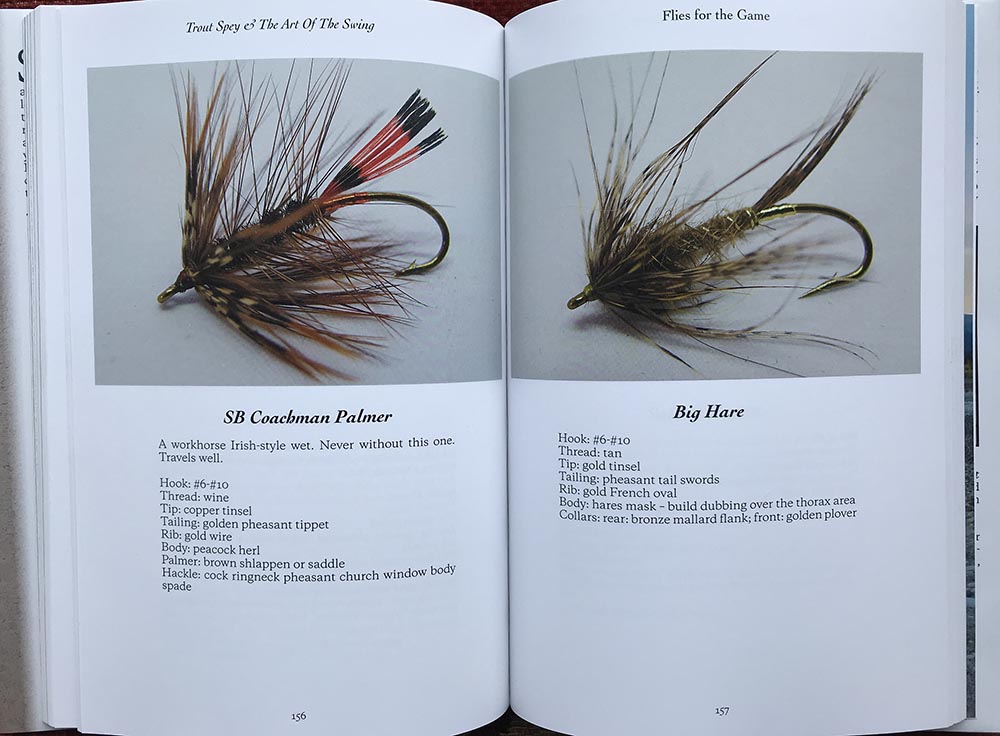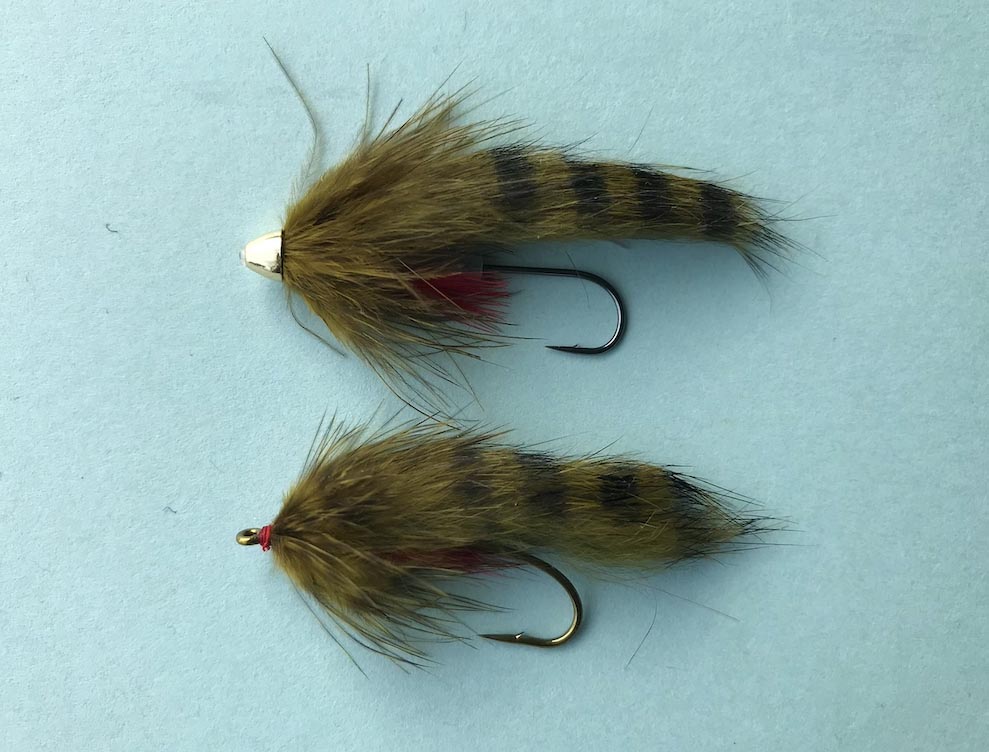
Most of my favourite fly fishing books are written by thinking anglers who’ve spent much time developing methods and fly designs to catch trout, especially in difficult situations. ’Trout Spey and the Art of the Swing’ by Steven Bird falls squarely into this camp.
‘Trout Spey and the Art of the Swing’ is a seminal work on designing, selecting and presenting flies to trout using Spey gear. It is not a book about learning to Spey cast or learning to tie flies as these topics are already well covered by others.
Bird’s Trout Spey journey began more than three decades ago, and unlike the paths of many Trout Spey gurus who came to the discipline from steelhead fishing, Bird turned to double-handed rods and Spey techniques to increase his success with rainbow trout on the upper Columbia River, USA.
Fishing for trout is different to fishing for salmon and steelhead. Salmon and steelhead are no longer feeding when they come into the rivers, whereas trout are actively feeding and the angler usually needs to imitate their food with fly and presentation.
There are many excellent books on matching-the-hatch using single hand rods and overhead casts, but Bird’s book is the first I’m aware of to comprehensively address this topic using Spey gear.
The book consists of eight chapters, comprising 259 pages altogether.
I: Trout Spey
In the eloquently written opening chapter, Bird describes his Trout Spey journey giving a fresh perspective on the history of the discipline.
II: Tackle
The Tackle chapter provides a solid grounding of the gear used for Trout Spey, aimed largely at the beginner to intermediate angler. It also provides informative descriptions of the gear and rigs used by the author for the methods and flies he describes in further chapters.
III: Art of the Swing
‘Art of the Swing’ explains several methods for presenting flies with a two hander to match various hatches, including baitfish, in different types of flowing water. I‘ve not come across another text on the subject, including internet and magazine articles, as comprehensive or innovative.
As far as soft hackles are concerned, Trout Spey anglers have depended on books describing techniques for single handed rods, with Dave Hughes’ 2nd edition of Wetflies being a classic.
Not all single hand techniques translate well to the double hander, e.g. upstream presentations on small streams. Reading ‘Art of the Swing’ makes it clear that certain techniques, when modified, are more effective on the long rod.
This chapter also covers effective techniques for swinging and presenting attracters and streamers, that go well beyond the standard 45 degree across-and-down stream cast, followed by a pull-back mend.
IV: Water and V: Seasons
Trout Spey, like most trout fishing methods, works best on certain types of water with each requiring a different approach, and the types of water where trout reside varies with the season, as does the fish’s mood and activity levels. These two chapters describe effective presentations for different types of water through the seasons. The second chapter includes a gem by Zack Williams on winter fishing.
Chapters IV and V can be considered extensions of Chapter III.
VI: Hatches
Bird details the major hatches occurring on North American rivers, including flies and methods to fish them. Although this chapter will be most useful to North American anglers, some of Bird’s techniques certainly apply to caddis and mayfly hatches in other parts of the world
VII: Flies for the Game
‘Flies for the Game’ begins with hook selection and other important elements for designing Trout Spey flies. Understanding Bird’s design philosophy and reading about his home waters gives a very useful insight into his fly selection.
He prefers swinging unweighted flies when fishing with sink tips on his local rivers, because these flies swim and dodge in the current better than weighted flies. When fishing a 15 -20 ft leader on a floating line, and needing to get down, he chooses a sparsely tied fly on a heavy wire hook, or a design with a few wraps of lead under the body.
He’s not partial to beads, cones or dumbbell eyes because they tend to create a ‘jig action’ and can become wedged between boulders. He concedes that streamers with weight up front are more suited to fast flowing water, with enough energy to lift and animate them so they don’t ‘track like down rigger balls’.
This chapter showcases 131 fly patterns, some of which are old classics while others are Bird’s own designs and those of fellow guides and anglers on the upper Columbia River. All flies are proven to work well on non-anadromous trout, i.e. fish that are river resident and do not migrate from the sea.
These flies are grouped into: Wee flies; ‘Depthcharge Worm’; Wetflies; A Few for the Great Lakes; Streamers, Muddlers and Sculpins; Nymphs; Dry Flies and Skaters; and Terrestrials - each section with its own short introduction.
Each pattern has its own page with a large beautifully clear photograph and recipe. Some have brief notes on the history of the design, while one or two of the more complex patterns include brief tying notes. Apart from an excellent and useful section on ‘Hackling Spiders and Flymphs’, there are no step-by-step tying instructions, which is a relief.

Many Spey anglers may be surprised that there is not a single intruder or articulated streamer in the entire book. Apart from the two Great Lakes tube flies, all the flies are tied on traditional single hooks. More on this later.
Wee Flies
There are 28 soft hackle designs for imitating small to medium mayfly and caddisfly emergers. Large soft hackles for imitating bigger mayflies, such as the red and green drakes, are found in the section on nymphs, and those imitating October caddis are found in the ‘Wetflies’ section. There are no winged wee wet flies.
Bird’s soft hackle designs are some of the best I’ve seen - simple, elegant and realistic. Although designed to imitate North American insects, they’ll work for mayfly and caddisfly hatches in any part of the world.
Wetflies
Wetflies is filled with an eclectic selection of 67 patterns ranging from Gartside Sparrows and large soft hackles to imitate October caddis, through to traditional palmered designs, such as Zulus, Woolly Worms and woolly buggers, to classic Spey style flies. Apart from the four October caddis patterns, the remaining designs would be referred to by Bird as ‘Attractors or Simulators’.
If ‘Flies for the Game’ included Intruder-style shank and trailer hook designs, which it doesn’t, they would be in this section. The more I studied Bird’s successful designs, the more I noticed the design elements creating volume and movement with minimal bulk, borrowed by steelhead anglers to create their larger trailer hook flies. I guess it doesn’t make sense to tie a trout-sized attracter pattern on a shank with a trailer hook, when you could tie it on a #6-4 long shank hook, such as a TMC 200R or a salmon iron.

The fly patterns in ‘Wetflies’ conform to five basic designs : 1) palmer hackle, e.g. Woodcutter, 2) Fore & Aft, 3) large full soft hackle, e.g. Big Hare, Wingless Coachman or Sparrow, 4) sparse soft hackle, e.g. UC Spider), and 5) winged Speys.
Since most of these designs do not imitate actual organisms, I would have appreciated notes on the pros and cons of the five basic designs, like when and where they are most effective. More information on colour choices for each category, would also be useful to anglers and fly tiers designing or selecting flies for particular rivers or seasons.
‘A Few for the Great Lakes’
The Great Lakes section has five designs for Great Lakes tributaries by Rick Kustich, which is the only section with tube flies and streamers with beads or cone heads.
Streamers, Muddlers and Sculpin
This section has eight baitfish designs, six of which are sculpins. Only one of these designs uses a rabbit strip, and six of them have wings of buck and/or squirrel tail - with not a cone, bead or dumbbell eye to be seen.
I’ve been inspired by Bird to tie unweighted versions of my favourite streamer creation, the Swing Minnow. In a moderately flowing current the tube version with light tungsten cone, darts from side to side - the rabbit strip, tied in only at the tip, wiggles like an earthworm on steroids. Although I suspect I may have missed a trick regarding the lateral movement on slower pools and tailouts, and the unweighted version may shine in these situations.

My standard cone head Swing Minnow tied on a tube (top)
and the unweighted version inspired by this book (below)
Nymphs
Five large (#2-#8) weighted stonefly nymphs with rubber or soft hackle legs and tails, and four large soft hackle pattens imitating red and green drake emergers. Big soft hackles imitating October caddis pupae are found in ‘Wetflies”.
I envy Bird and other Trout Spey anglers fishing waters with large insects, where big imitative soft hackles and nymphs can be used as searching patterns. In New Zealand, the large stoneflies and mayflies are confined to head waters, where the water is crystal clear and trout populations sparse, so better suited to sight fishing with a single handed rod. Searching patterns in New Zealand are largely baitfish imitations.
Dryflies & Skaters
This section has two October caddis designs, one red drake, and a mouse. I can only imagine how much fun it would be to skate an October Caddis as a searching pattern during the day.
Terrestrials
Terrestrial insects eventually sink, and trout often eat them below the surface. This section has several soft hackle terrestrial insects imitations including: deer fly, bee, ant, cranefly and beetle.
VII: Day on the Water
The final ‘chapter’ is a three and a half page essay about Bird’s day on a stretch of river with his friend, where Bird describes how he uses the techniques in chapters III to V on different types of water.
Summing up
‘Trout Spey and the Art of the Swing’ is a must read for anyone interested in fishing for trout with a double handed rod. It will help most become better Trout Spey anglers, regardless of their experience, and is likely to inspire constructive and creative thinking on fly design.
Chapters III - V dealing with presenting flies to match various hatches on different types of water and through the seasons, are alone worth the price of this book. There is no book, or even collection of books, I’m aware of that comes close to providing this much essential detail for the Trout Spey angler.
Bird’s comprehensive collection of soft hackles and nymphs are functional, elegant and easily cover mayfly and caddisfly hatches anywhere in the world. His ‘attractors’ and ‘simulators’ will certainly have creative juices flowing, and the streamer designs and philosophy behind them are inspirational.
‘Trout Spey and the Art of the Swing’ is available from ‘Swing The Fly’ magazine at the following link:
https://swing-the-fly-magazine.myshopify.com/products/trout-spey-the-art-of-the-swing-by-steven-bird
See other reviews :